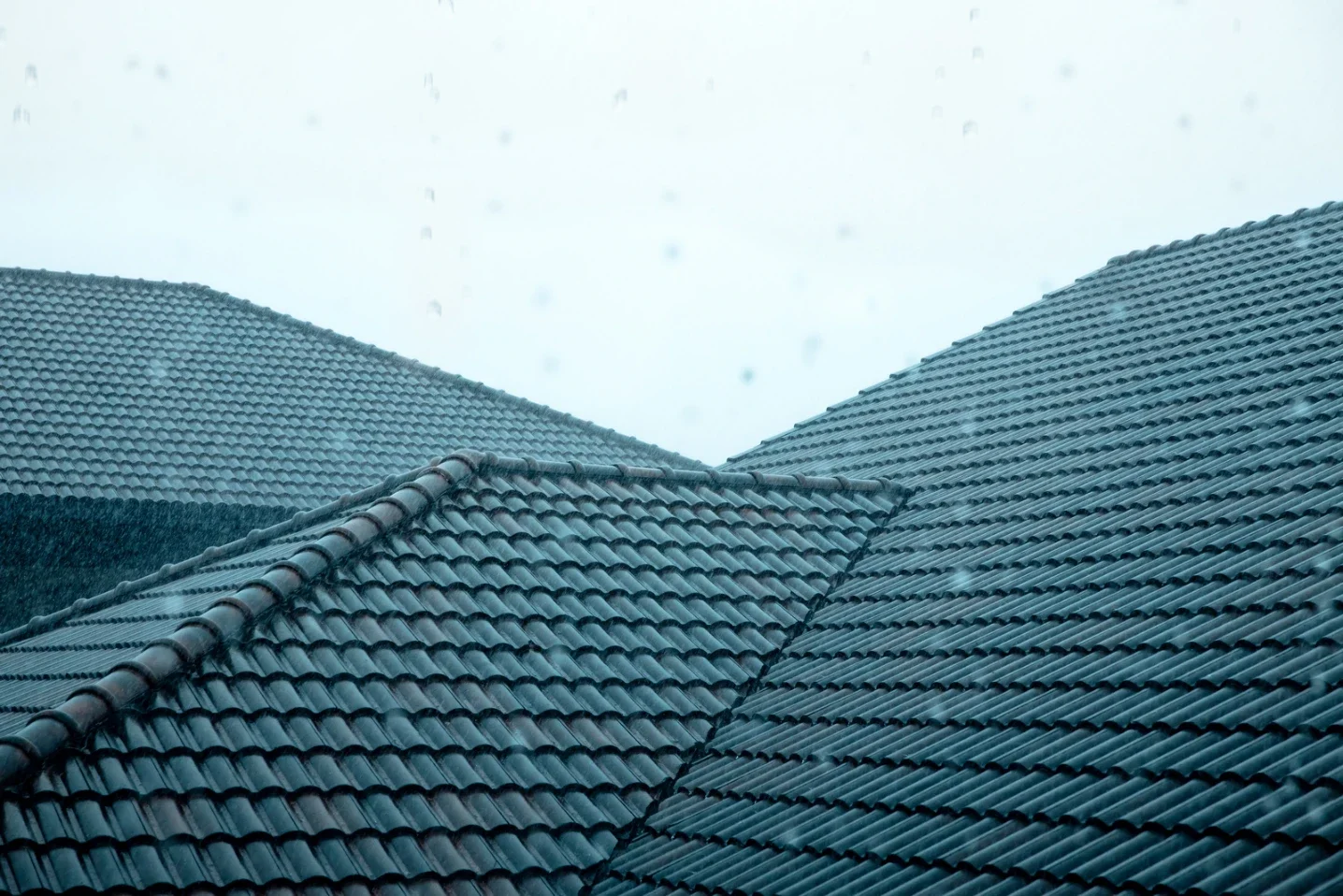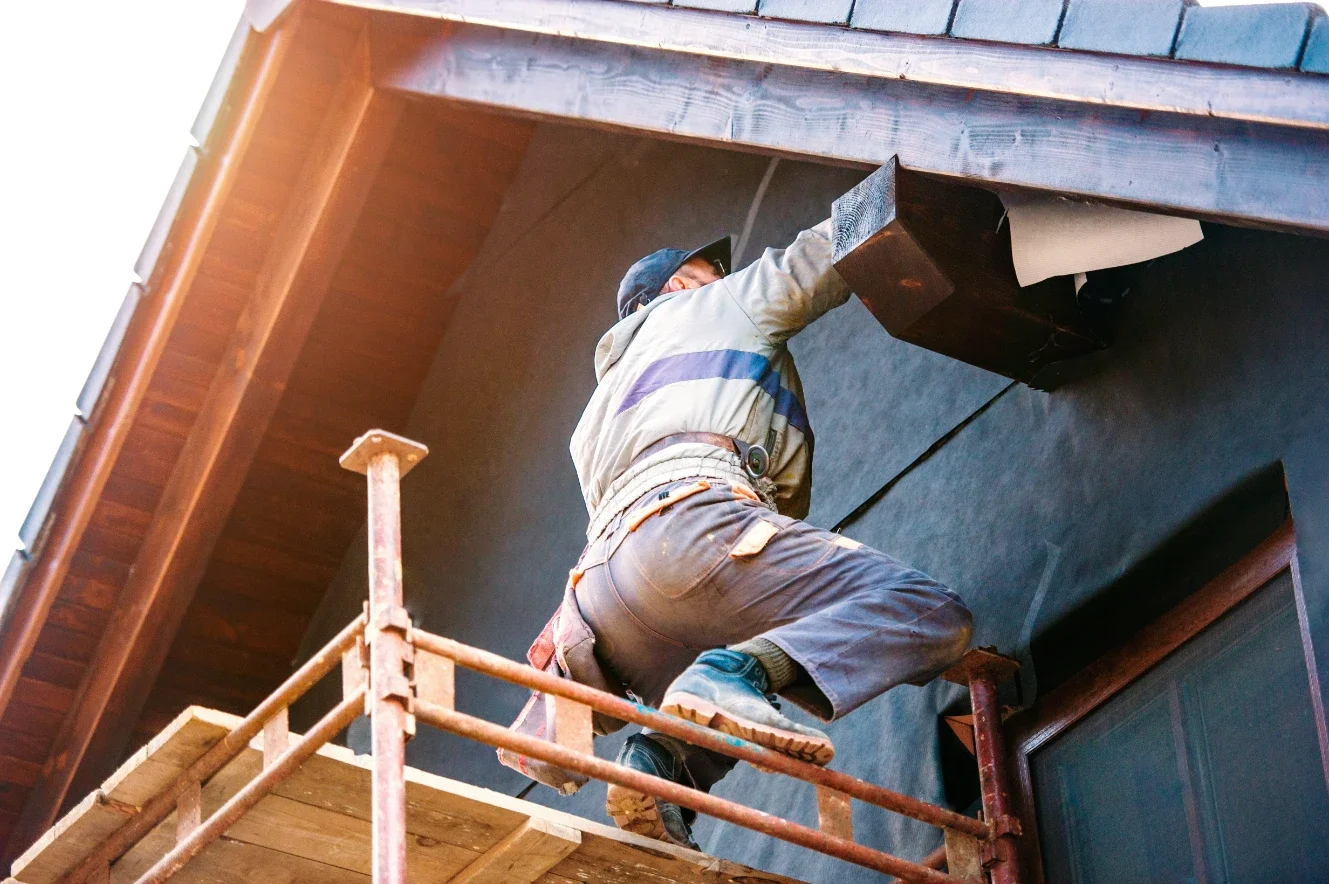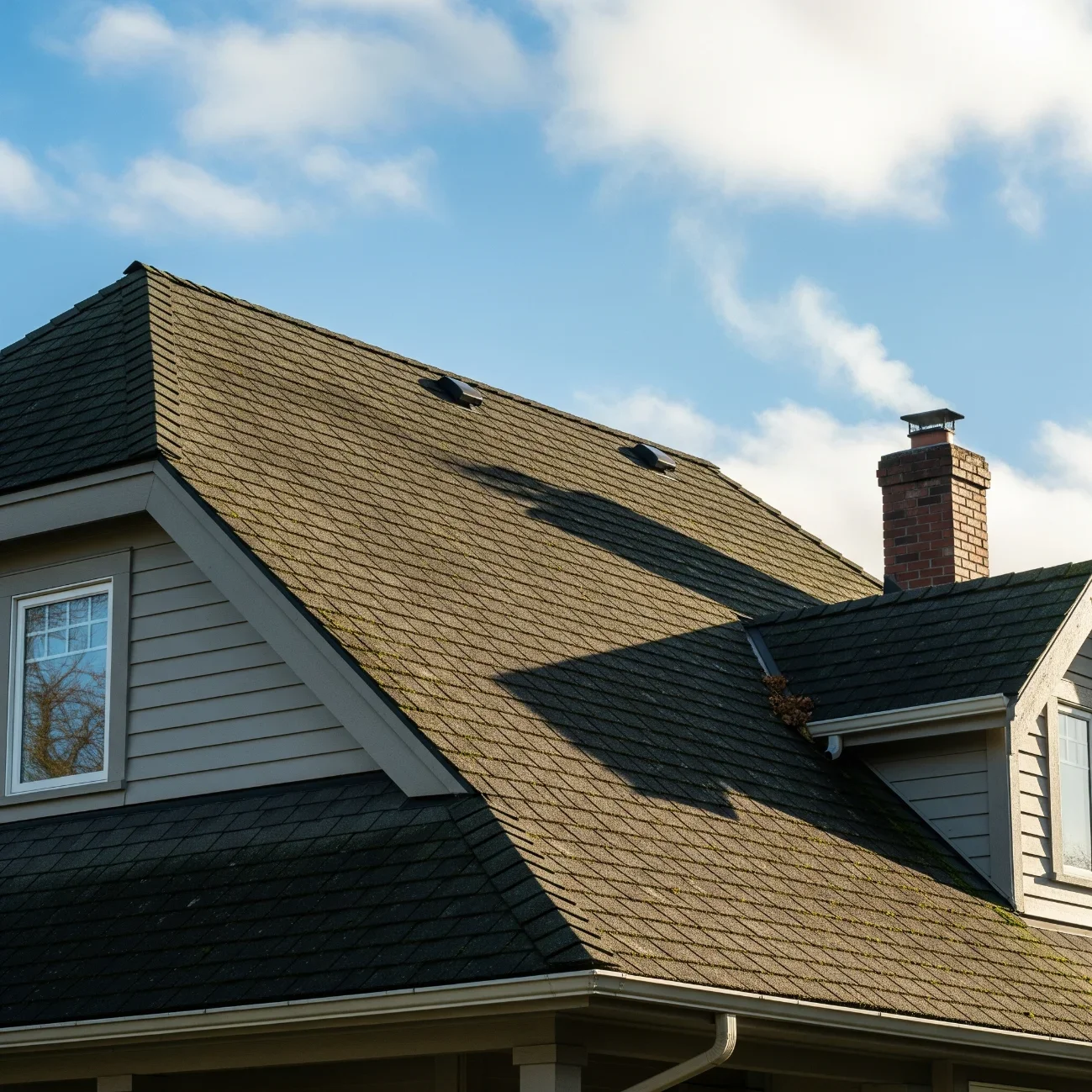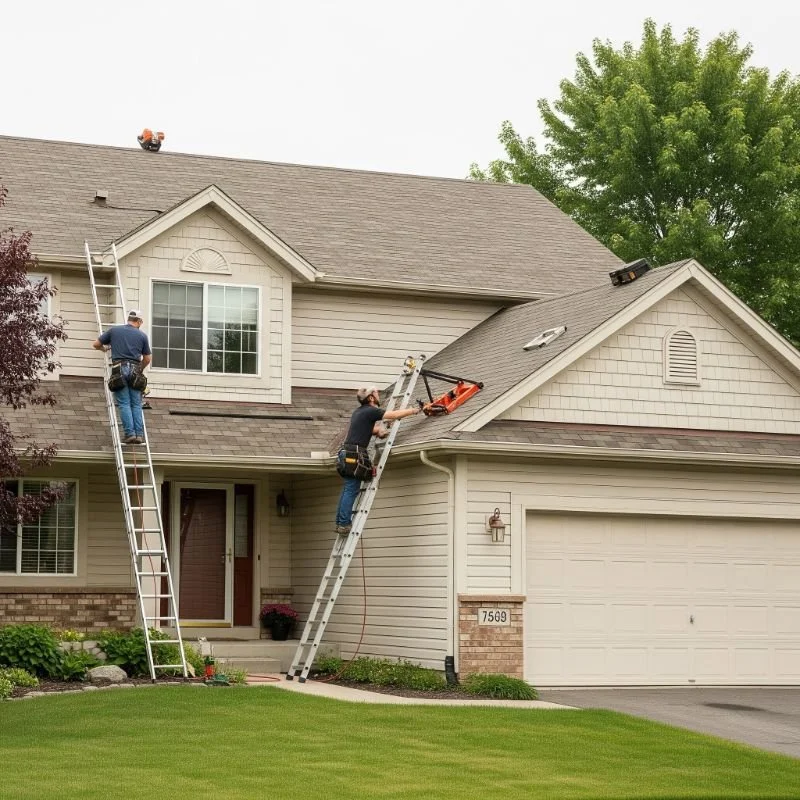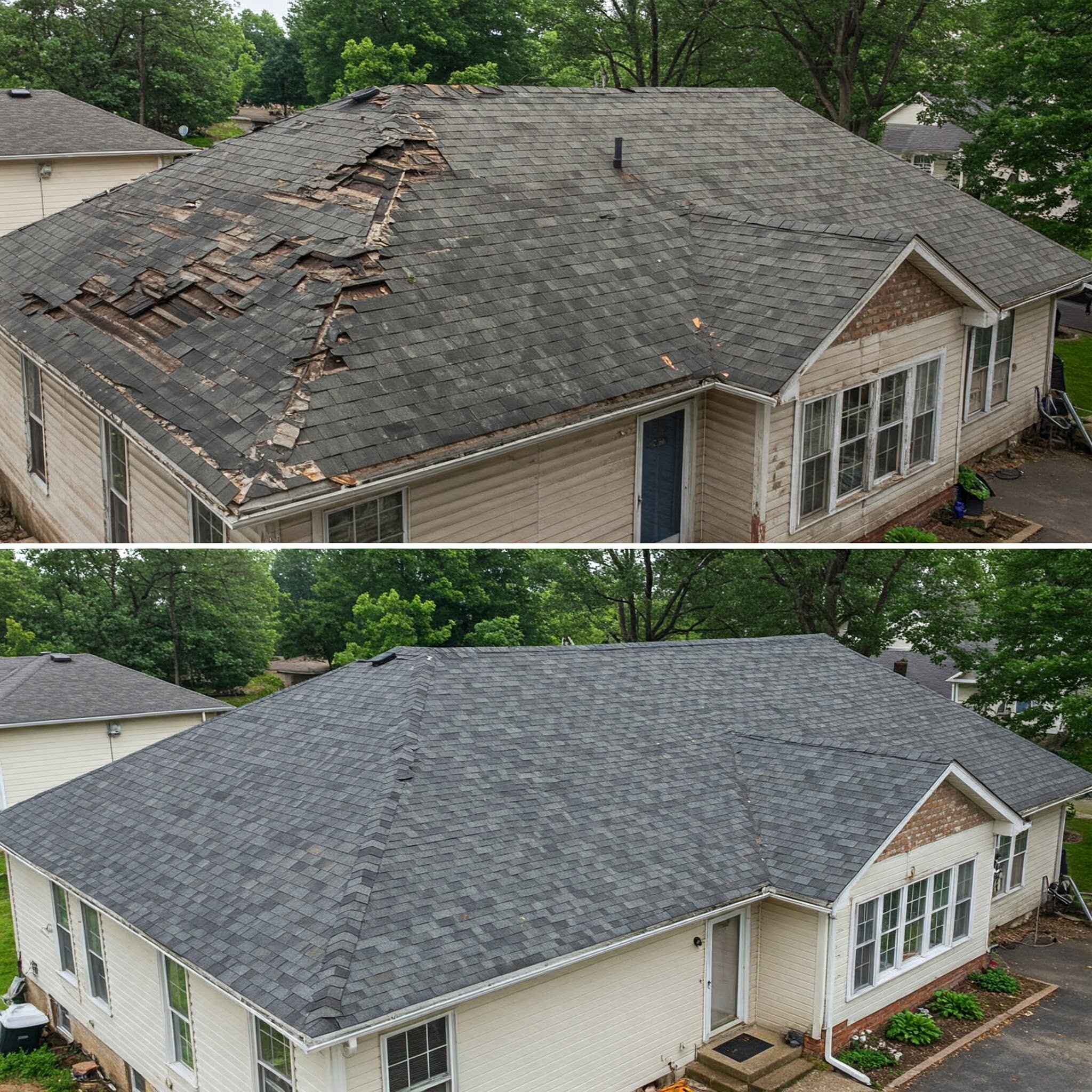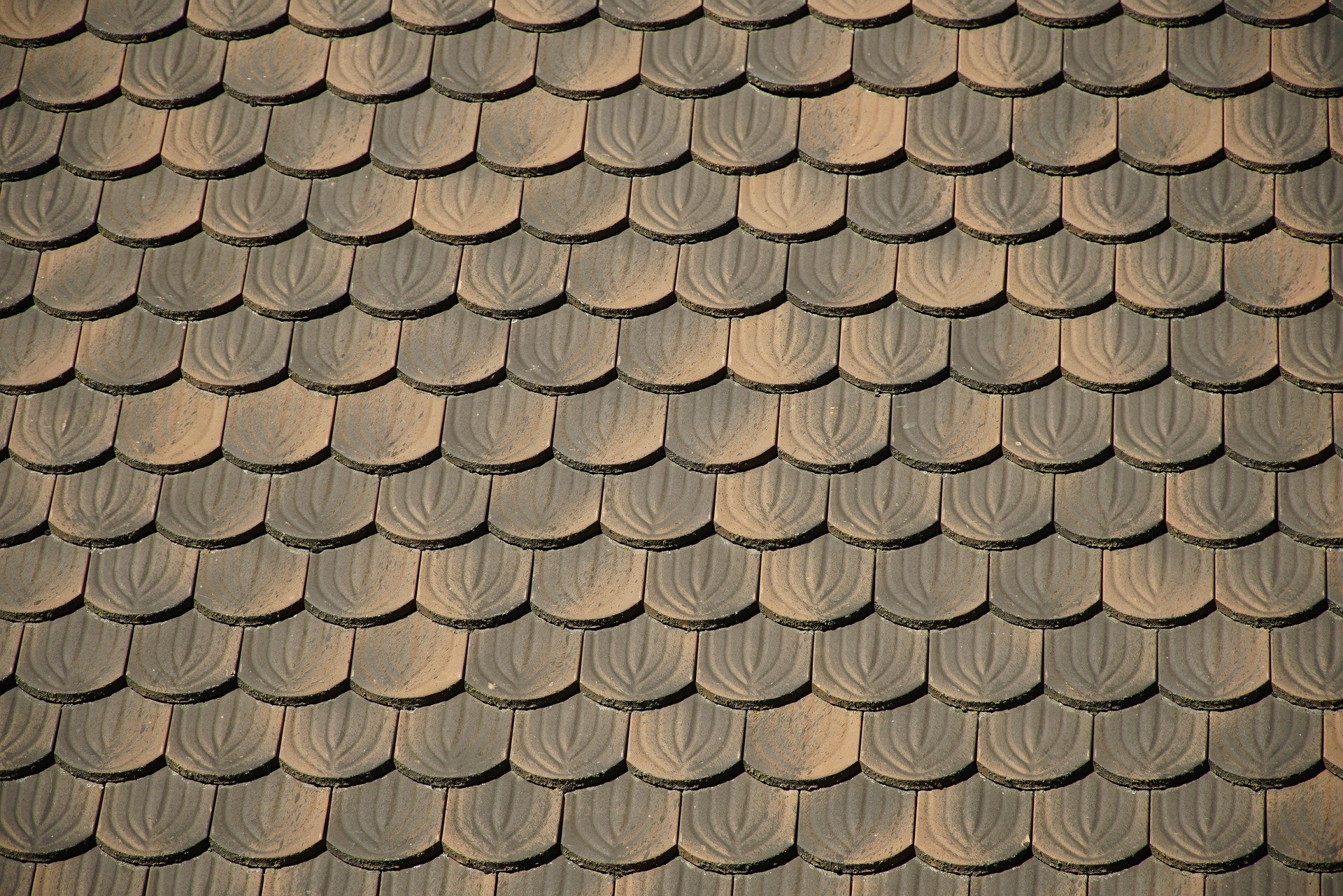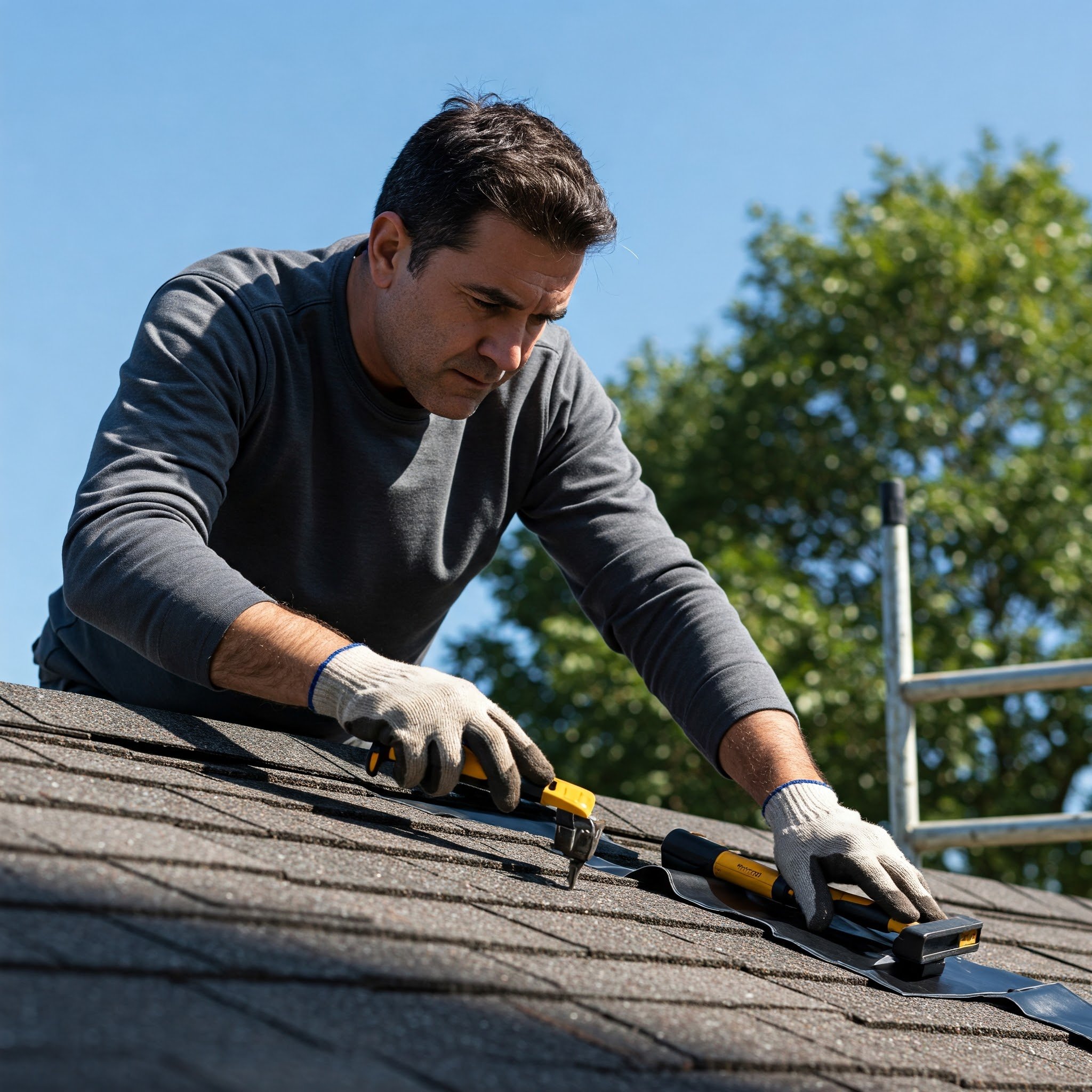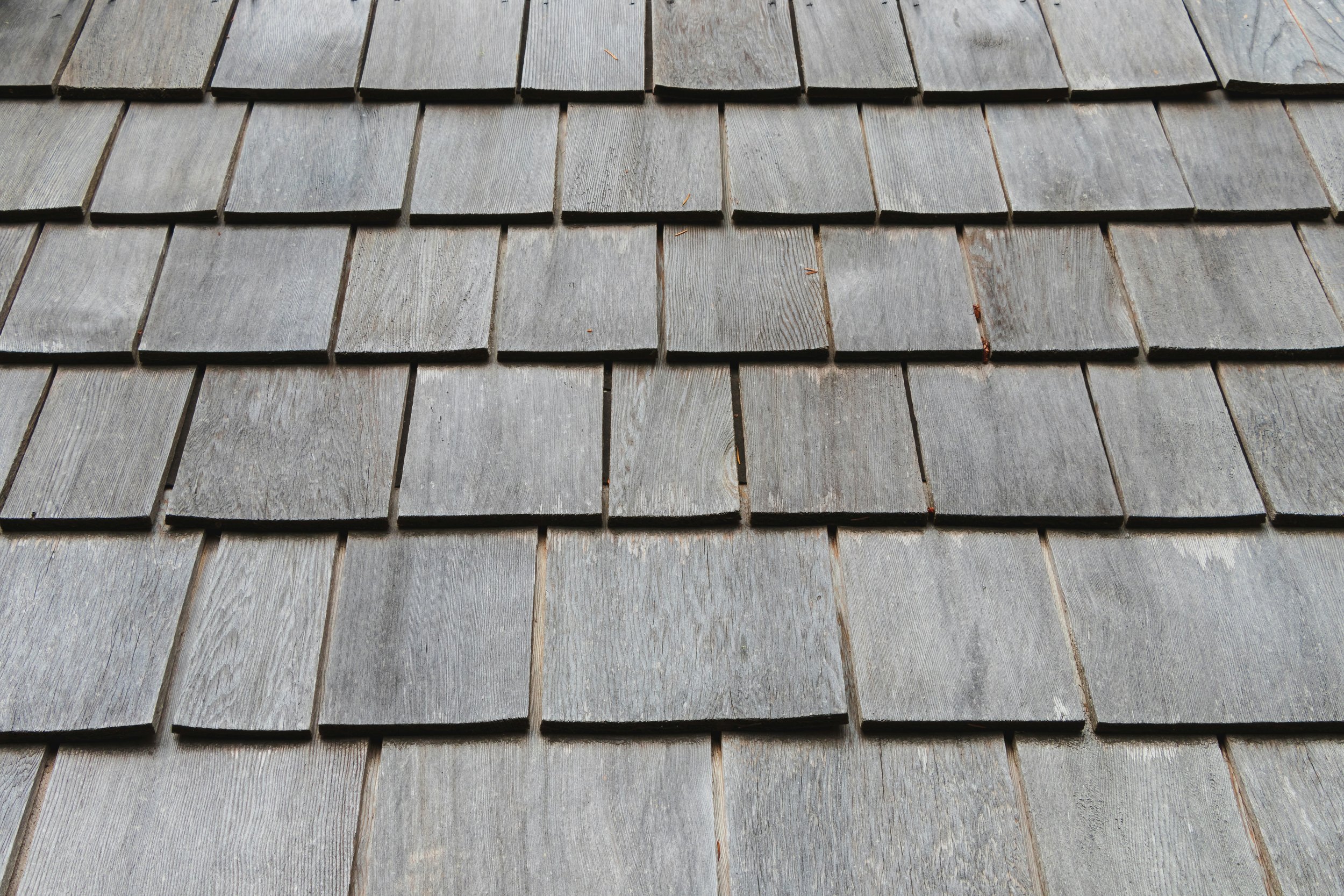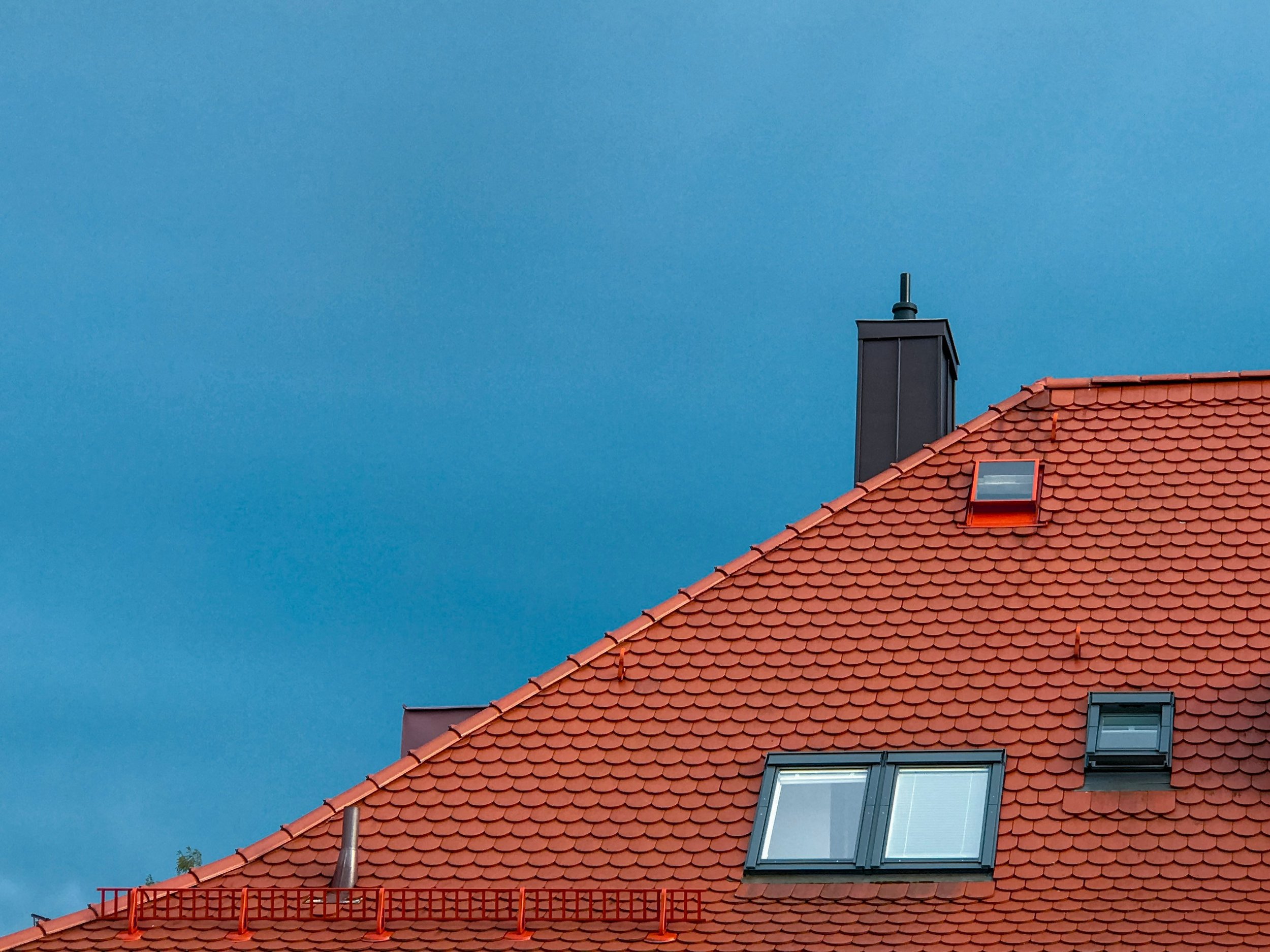The Ultimate Decision: Roof Replacement vs. Repair – What’s Best for Your Home?
Deciding between roof repair or replacement? Learn the key factors to help you choose the best option for your home’s safety, value, and longevity.
When it comes to maintaining your home, one of the most significant aspects to consider is the condition of your roof. Whether you're a new homeowner or have been living in your house for years, understanding the age and material of your roof can make a world of difference when deciding between repairs and a complete replacement. Different roofing materials offer varying lifespans and levels of durability, which can significantly influence your decision-making process. By familiarizing yourself with these factors, you can make informed choices that protect your home and save you money in the long run. Let's dive into what you need to know about evaluating your roof's age and material.
Evaluating Your Roof's Age and Material
According to experts at Azul Roofing Solutions, understanding the age and material of your roof is crucial when deciding between repair and replacement. Different roofing materials come with varying lifespans and levels of durability, which can significantly influence your decision. For instance, asphalt shingles, one of the most common roofing materials, typically last 15 to 20 years. On the other hand, metal roofing can endure for over 50 years if installed correctly. This disparity in longevity means that while an older asphalt shingle roof might be nearing its end, a metal roof could still have decades of life left. Assessing these factors helps you decide whether a simple repair or a full replacement is necessary.
When evaluating your roof's condition, it's essential to consider its age and the specific material used. Each type of roofing material has its own set of characteristics that affect how it ages and withstands environmental conditions. Here's a quick rundown:
Asphalt Shingles: Affordable and popular, but prone to granule loss and curling as they age.
Metal Roofing: Durable and long-lasting, offering excellent resistance to weather elements.
Tile Roofing: Known for its aesthetic appeal and longevity, it can be heavy and require additional structural support.
By understanding these differences, homeowners can better anticipate when their roofs need attention and plan accordingly. Regular inspections by a professional can further aid in determining the current state of your roof, ensuring you address any issues before they escalate into more significant problems.
Signs That Indicate It's Time for a Roof Replacement
When considering a roof replacement, several signs should not be overlooked. Frequent leaks indicate that your roof may need more than just a patch-up. If you're constantly dealing with water seeping into your home, it could mean that the underlying structure is compromised. Additionally, extensive granule loss on shingles is another red flag. These granules protect your roof from the sun's harmful UV rays, and their absence can lead to accelerated wear and tear. Structural sagging is one of the most serious signs, indicating potential damage to the roof deck or supports.
Ignoring these issues can lead to more severe problems down the line, such as:
Mold growth due to persistent moisture.
Wood rot, which can weaken the structural integrity of your home.
Increased energy bills from poor insulation caused by roof damage.
It's crucial to consult with a professional roofer for an accurate assessment of your roof's condition. A qualified expert can provide insights into whether a replacement is necessary and help you avoid costly repairs in the future. Remember, addressing these signs promptly protects your home and ensures peace of mind.
When Roof Repair is a Viable Option
When considering whether to repair your roof, it's essential to recognize scenarios where a simple fix is sufficient. Minor damage, such as that caused by storms or isolated leaks, often doesn't necessitate a full replacement. Instead, these issues can be addressed with targeted repairs. Regular maintenance plays a crucial role in extending the life of your roof. By addressing minor problems promptly, you can prevent them from escalating into more significant issues that require costly interventions. Homeowners should proactively conduct self-inspections, looking for signs like missing shingles or minor leaks.
During self-inspections, there are several key indicators to watch for that suggest a repair is needed rather than a replacement. These include:
Minor leaks: Often visible as water stains on ceilings or walls.
Isolated shingle damage, Such as curling or missing shingles in small areas.
Localized granule loss can be identified by checking gutters for granule accumulation.
By looking for these signs and addressing them quickly, you can significantly extend the lifespan of your roof. Remember, timely repairs not only save money but also ensure the safety and integrity of your home. Engaging with professional roofing services for regular inspections can further aid in maintaining your roof's health and longevity.
The Impact of Improper Installation on Roof Longevity
Improper installation can drastically shorten the lifespan of your roof, leading to frequent and costly repairs. When a roof isn't installed correctly, it may not provide the necessary protection against weather elements, resulting in leaks and structural damage. It's crucial to understand that while a lower price might seem appealing initially, opting for cheaper services often means compromising quality. A poorly installed roof can lead to problems such as:
Leaks: Incorrectly placed shingles or inadequate sealing can allow water to seep through, damaging the interior of your home.
Structural Damage: Improper support or alignment can weaken the roof's structure, making it susceptible to collapse under heavy loads like snow or debris.
Choosing a reputable contractor ensures your roof is installed correctly and lasts for years. Look for professionals with proven experience and positive reviews. Remember, insurance policies often do not cover damages from poor installation practices, leaving you responsible for repair costs. Investing in a skilled contractor might have higher upfront costs. Still, it will save you money and stress in the long run by avoiding unnecessary repairs and ensuring your roof's longevity.
Cost Considerations: Repair vs. Replacement
When deciding between ongoing roof repairs and a complete roof replacement, it's essential to weigh the costs involved. While repairing your roof might seem more budget-friendly, frequent repairs can quickly add up, leading to significant expenses. On the other hand, investing in a new roof may require a higher upfront cost but often proves more economical in the long run. A new roof reduces the need for constant fixes and enhances your home's overall value and energy efficiency.
Consider your long-term plans for your home when making this decision. If you plan to stay in your house for many years, a new roof could provide peace of mind and reduce maintenance worries. Here are some factors to consider:
Durability: A new roof typically offers better durability and protection against harsh weather conditions.
Energy Efficiency: Modern roofing materials can improve insulation, potentially lowering energy bills.
Home Value: A well-maintained or newly replaced roof can increase your property's market value.
Ultimately, consulting with roofing professionals can provide valuable insights into whether a repair or replacement is the best choice for your situation. They can offer expert advice tailored to your home's needs and help you make an informed decision that aligns with your budget and plans.
The Role of Regular Maintenance in Extending Roof Life
Regular maintenance plays a crucial role in extending the life of your roof and preventing major issues down the line. By routinely cleaning debris and conducting thorough inspections, you can identify potential problems before they escalate into costly repairs or replacements. Debris accumulation, such as leaves and branches, can trap moisture on your roof, leading to leaks and structural damage over time. To maintain your roof effectively, consider implementing a regular cleaning schedule to remove any debris that may have settled on the surface or in the gutters. This simple act helps water drainage and reduces the weight burden on your roof.
In addition to cleaning, conducting regular inspections is vital for spotting early signs of wear and tear. Homeowners should look for issues like missing shingles, rusted nails, or cracked flashing during self-inspections. Addressing these minor problems promptly can save you from more significant headaches later. Here are some practical tips for maintaining your roof:
Schedule bi-annual professional inspections to catch any hidden damage.
Perform visual checks after severe weather events to assess any immediate impact.
Ensure proper attic ventilation to prevent moisture buildup and extend shingle life.
By staying proactive with maintenance, you not only enhance the longevity of your roof but also safeguard your home’s overall integrity. Remember, a well-maintained roof is less likely to require premature replacement, saving you money in the long run.
Consulting with Roofing Professionals
Consulting with roofing professionals can provide invaluable insights when deciding whether to repair or replace your roof. These experts bring a wealth of experience and knowledge, ensuring you make an informed choice tailored to your home's needs. Homeowners can expect a thorough evaluation of their roof's condition during a professional inspection. This includes identifying potential issues that may not be visible to the untrained eye, such as underlying structural problems or subtle signs of wear. A credible contractor will offer a detailed report and discuss the best course of action, whether minor repairs or a complete replacement.
Choosing the right contractor ensures quality work and peace of mind. Look for professionals with strong reputations, verified credentials, and positive customer reviews. It's also wise to inquire about warranties and insurance coverage. A reputable roofer will stand by their work with solid warranties, providing you with added security. Additionally, understanding what your homeowner's insurance covers regarding roof repairs or replacements can prevent unexpected expenses. By taking these steps, you ensure that your investment in your home's roof is protected and that you make decisions based on expert guidance.
Summary
Understanding your roof's age and the materials used is essential when deciding about it. Different roofing materials have varying lifespans, significantly influencing whether you opt for repairs or a complete replacement. For example, asphalt shingles are standard but typically last only 15 to 20 years. In contrast, metal roofing can last over 50 years if installed correctly. Knowing these differences helps homeowners make informed choices about their roofs' future.
It's not just about the age; the type of material plays a significant role in how your roof withstands environmental conditions. Asphalt shingles are affordable but may suffer from granule loss and curling as they age. Metal roofs offer durability and weather resistance, while tile roofs provide aesthetic appeal and longevity but require additional support due to their weight. Regular inspections by professionals can help identify issues early, ensuring minor problems don't escalate into major ones.

